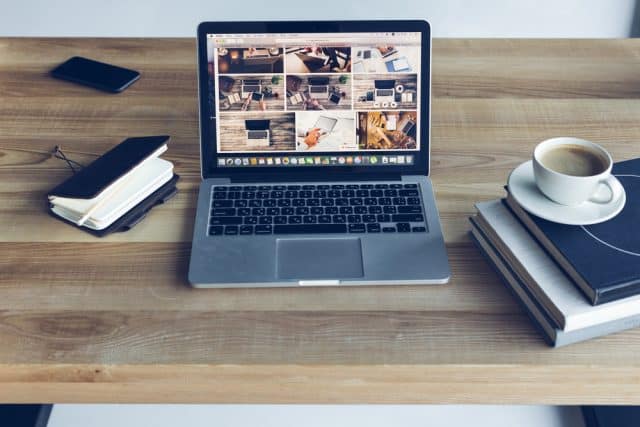Fueling the Apple BYOD revolution [Q&A]

It's no secret that BYOD provides incredible benefits on paper -- from increased productivity to more flexibility and streamlined output. But unfortunately, many initiatives fail to take off due to security and privacy concerns.
Mosyle CEO Alcyr Araujo believes this doesn't always have to be the case, and that Apple devices are primed to offer the best balance for BYOD. We spoke to him to find out more.
BN: Why do companies implement BYOD programs?
AA: It's easy to see why BYOD is so prevalent because it is mutually beneficial for both employees and companies since it allows for employees to work from a device they're most familiar with, comfortable using and likely to trust. For many people these days, smartphones are practically a fifth limb -- they would find it hard to function without them. Using them as part of their jobs seems only natural.
BN: What role has Apple played in the BYOD movement?
AA: Apple has had a strong influence on pushing the BYOD concept forward. The introduction of the iPhone and iPad created a world where employees now have mobile devices capable of performing several (if not all) work-related tasks with them. And the preference shows. For nearly a decade, Apple devices have been favored in the enterprise by as much as 84 percent. Yet, the risks of managing employee-owned devices have hampered some organizations.
BN: What are the risks of BYOD programs for employees and enterprises?
AA: The convenience and benefits of BYOD come with a price in the form of risks devices can bring into the enterprise. And while most companies have at least a nominal BYOD program, many fail to fully manage those devices, leaving company systems and data vulnerable.
According to recent research, 83 percent of companies have some form of BYOD policy, and 75 percent of employees use their personal cell phones for work. But 38 percent of those companies don’t have a BYOD security policy. In addition, only 32 percent require employees to register their devices with the IT department to have security software installed, and 17 percent of employees say they use their personal devices without telling the company.
For companies, the risks start with lacking complete control over BYOD devices, which makes it difficult for IT teams to meet basic compliance requirements regarding privacy and security. Because employees use the same personal phones for work that they use for everything else, the security of their personal apps can become an issue too.
BYOD also complicates questions that are much simpler when dealing with company-owned computers and devices, such as where confidential data is stored and how it is protected. Whether all devices connected to a network have been updated and patched can also be a question with personally owned devices. How can a company be sure those devices are free of malware? When an employee leaves, how can the company be sure that all company data has been removed from their smartphone?
Meanwhile, employees have security and privacy concerns of their own. For example, they are interested in keeping their devices' personal use separate, so the company can't access their private messages, photo libraries, browsing history, apps, or location data.
BN: How can you manage the risks associated with BYOD programs?
AA: Finding a work/life balance with BYOD, where work and personal matters can be handled via the same device while keeping the data, apps and risks separated, is difficult. That's why thorough BYOD programs are still the exception rather than the rule.
For that to change, companies need to consider implementing a comprehensive Mobile Device Management (MDM) solution, such as the one offered by Mosyle, combined with a management method built by Apple and included on any iPhone and iPad called User Enrollment.
BN: Why are Apple User Enrollment and MDM key to unlocking BYOD initiatives?
AA: With Apple's User Enrollment, a company can create a Managed Apple ID account, similar to how someone makes an iCloud account, which is controlled and managed by the company. Employees can then log in using their own Managed Apple ID via their personal iPhone or iPad and create an account strictly for work, completely separate from their personal iCloud account.
Users can also enroll their devices into an Apple-specific MDM using a simple method designed for personal devices. While this method connects employees' devices to the enterprise, it grants the company access only to the company resources on that device. Any individual apps or data is entirely separate.
Beyond ensuring device security and privacy compliance, the combination of User Enrollment and an MDM solution enables companies to automatically install and configure all of an employee’s work applications and accounts. And when an employee leaves the company, those apps, data and resources are automatically removed when User Enrollment is deleted. This can be done remotely by the employee or the company -- there will be no need to go in and wipe data.
The User Enrollment method and the MDM solution also protect employees' privacy by ensuring that the company cannot access a user's personal information, usage data, logs or an inventory of personal apps. The company does not have the ability to take over management of a private app, nor can it access the device's location or tap into unique identifiers such as a serial number.
Apple's User Enrollment working in concert with an Apple-specific MDM solution is an example of how enterprises can seamlessly deliver the balance between protecting the company's data and the employees' privacy while managing risk. It's a BYOD approach all companies need to consider going forward.
Image credit: KostyaKlimenko/depositphotos.com